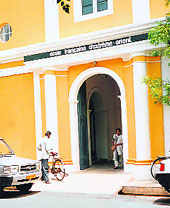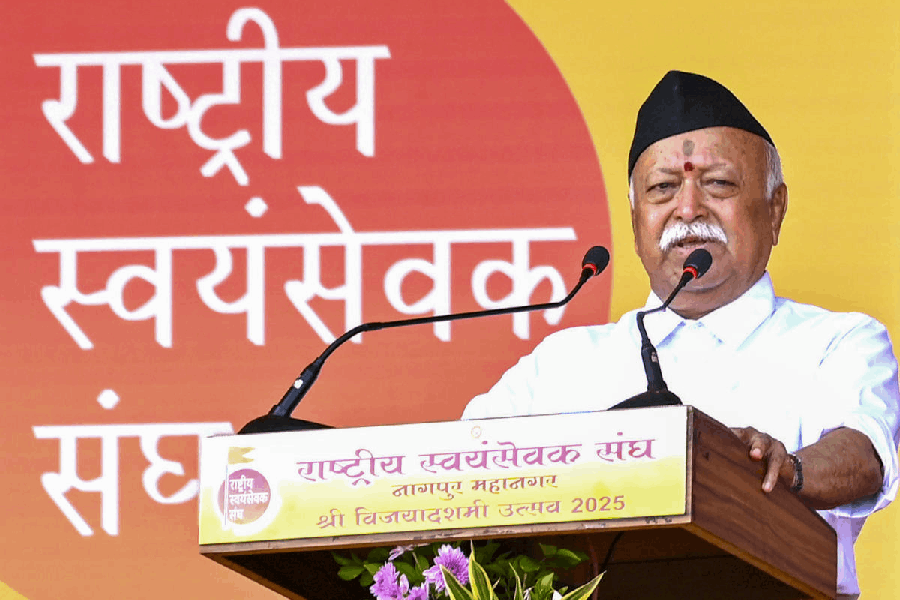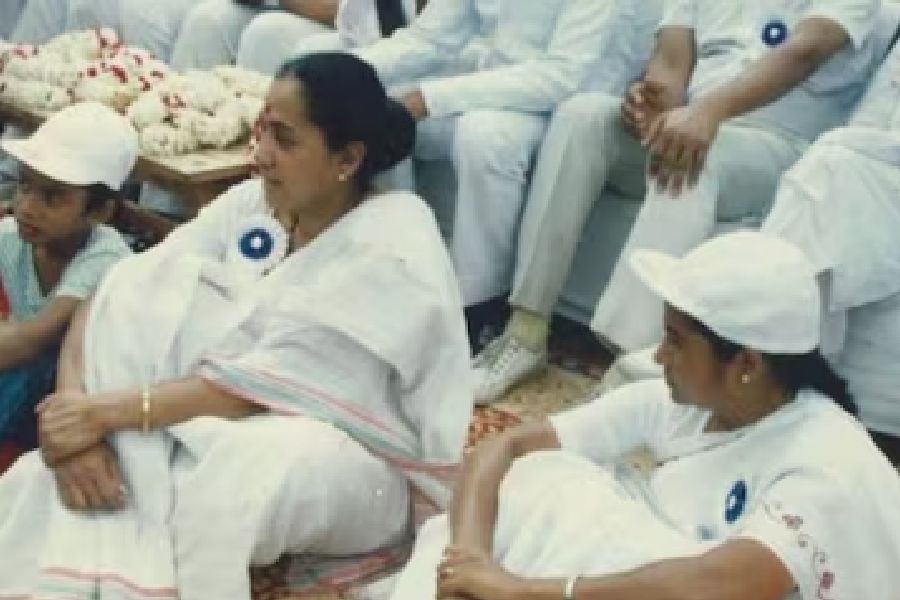 |
 |
 |
| (From top) the entrance to the French Institute; the Matrimandir at Auroville; a tree-lined avenue in Pondicherry |
The two-hour drive to Pondicherry seemed like a daunting prospect. We had just spent a glorious afternoon, indefatigably shopping for saris in the sultry heat of Kancheepuram. So, I jumped into the car for the 130km drive along the South Coast Road from Kancheepuram to Pondicherry, hoping just to sleep for the next two hours.
Everyone waxes eloquent about the scenic beauty on the East Coast Road from Chennai to Pondicherry. But nobody ever breathed a word about the South Coast Road. So, I was taken by surprise when it became clear that I was on the most beautiful drive I?d ever experienced. Later, on the way out, it was outdone by the drive back to Chennai on the East Coast Road. The entire South Coast stretch is a tree-lined avenue with miles of greenery on both sides. The East Coast road, on the other hand, is right next to the sea for almost 150km. Certainly, all roads don?t lead to Pondicherry, but driving along those that do, is sheer pleasure.
Pondicherry itself is a sleepy little town and it looks as if nothing has happened since the French left in 1954. Clean, well-paved, even streets mostly meeting at right angles with quaint street lamps, give Pondy, to use its nickname, an old world charm. The fact that most people?s favoured mode of transport is the bicycle, adds to it. Of course, the French influence is remarkable. Schools teach English, Tamil and French and signboards in French are common. What?s more, the cops wear French-style caps and look completely different from their counterparts in next-door Tamil Nadu.
A few things have changed. For instance, the Quai de Gingy is now Netaji Subhash Chandra Bose Salai. But if we wanted any more proof of the town?s ?Frenchness?, we got it when we bought some sweets from what looked like a mithai shop only to receive a receipt that said ?Merci? instead of ?Thank you for shopping with us?.
France?s dreams of the Indian empire began and ended in Pondicherry. The contest with the British was like a ping-pong game that started with the siege and destruction of the town in 1761 and ended in 1815 when the French got it back for good. Pondicherry finally became a part of independent India in 1954. Nearly 20 per cent of Pondicherry?s population hold French passports and a large number of retired people get pensions from the French government.
Pondicherians are rather proud of their French background ? and this shows in the fact that they haven?t dismantled the old signs of colonial rule. Tourists can start their trip round the town by stopping off at the statue of Francois Dupleix ? the French governor whose rule came to an end in 1754. The 2.88-metre statue shows Dupleix standing next to bags of gold. The people of the town will proudly tell you that while the British looted India, the French actually brought wealth to the country and even when they left, they did not take anything back with them.
Other signs of its colonial past are the French War Memorial dedicated to French soldiers who lost their lives in World War I and the Aayi Mandapam. The Aayi Mandapam was built during the reign of Napoleon III. Built in Greco-Roman style, it is totally white and bears the name of Aayi, a 16th century courtesan who razed her house and replaced it with a reservoir to appease a passing king. It was from this lake that Napoleon?s men quenched their thirst, some 300 years later. Napoleon charmed by the story ordered a monument to Aayi.
A less pleasant reminder of the past is from the fact that the town is divided into the French quarter and the Tamil quarter, though the locals prefer to call it the ?White city? and the ?Tamil city?. However, these distinctions are only in name now since more Indians than non-Indians stay in the French quarter and the Tamil quarter houses a mix of people from all over India and the world.
The French quarter is characterised by its European classical style structures. The street facades usually have continuous wall-to-wall construction with elaborate gateways, wooden balconies and parapets.
But if you?re not a heritage or architectural buff and are wondering what you?d do in Pondicherry, the answer is simple ? relax. Just hang out on the beach or walk on the streets. And when tired, walk into one of the several restaurants offering everything from French to South Indian cuisine. There are also plenty of bars to chill out in and they are reasonably cheap since alcohol is lightly taxed. In fact, people from Tamil Nadu frequently makes trips to buy liquor and illegally take it back across the border.
The beaches in Pondicherry are clean and unlike those of Goa, less crowded. The sea front in town doesn?t have a sandy beach but instead is rocky and has a lovely promenade ideal for morning walks. Early in the mornings and evenings, traffic to the beach road is restricted making it a walker?s paradise.
But those craving for sun and sand can drive down to the beaches surrounding the town such as Serenity Beach, a 10-minute drive to the north of town and the Plage Paradiso, along the Cuddalore Main Road. The tourism department has built cottages and even a tree house on the backwater banks.
Also, the town is heaven for the shopaholic. Everything from replicated antique furniture to ceramics, from incense sticks to lighting and from clothes to shoes are available. Since the town attracts a large number of foreigners, a lot of handicrafts and kitsch are also available. Do take a look at the leather products. Hidesign is based in Pondicherry and their products are slightly cheaper here than in other cities.
Pondy also has some very good ceramic artists specialising in tableware and d?cor. This is export quality stuff at Indian prices. Check out the Golden Bridge range available at various shops such as Casablanca. Export-surplus clothes from neighbouring Tirupur also find their way to Pondicherry, making high-fashion available at low rates.
If France was the single most important influence over Pondicherry before it became a part of India, the Aurobindo Ashram and Auroville now exert the same influence in giving Pondicherry its present character. The Ashram is in the heart of town while Auroville is 10km away. While nearly 1,500 persons of different nationalities are Ashram members, almost 1,800 people belonging to 40 countries live in Auroville. Both the Ashram and Auroville are based on the philosophy of Shri Aurobindo, the revolutionary turned scholar, poet and seer and his spiritual partner, The Mother. Auroville is based on the ideal of human unity and is based on the principle of community living.
Both the Ashram and Auroville are, obviously, worth a visit. The Matrimandir, for instance, is a huge meditation hall in the centre of Auroville. It has been under construction for a long time and the outer globe is being covered with huge gold disks.
You can?t really miss the influence of the Ashram or Auroville on Pondicherry since nearly half the shops sell products made by the Ashramites or Aurovillians and many eateries and guest-houses are run by them.
If you want budget accommodation, check into one of the guest-houses run by the Ashram. They are well located and reasonably priced at around Rs 750 a night for an AC room. But they have their own rules like you have to be back by 10.30 pm
Is Pondicherry too out of the way to make the effort? Perhaps the Pondicherry Tourism slogan says it all ? Visit Pondicherry. Give time a break.










